Add this eBook to your basket to receive access to all 51 records. Our indexes include entries for the spelling battell. In the period you have requested, we have the following 51 records (displaying 31 to 40): These sample scans are from the original record. You will get scans of the full pages or articles where the surname you searched for has been found. Your web browser may prevent the sample windows from opening; in this case please change your browser settings to allow pop-up windows from this site. Inhabitants of Hertfordshire
(1723)
An Act of Parliament of 9 George I required all men aged 18 and over who had not done so previously to swear allegiance. From 17 August to 24 December 1723 the greater part of the men of Hertfordshire attended at various inns in the county to sign the oath of allegiance: women were exempt from the act, but almost as many attended and swore. This list indicates the place of attestation by letters A., B., C., &c., for which there is a key, scans of which are included with the main scan for the surname. | Sample scan, click to enlarge
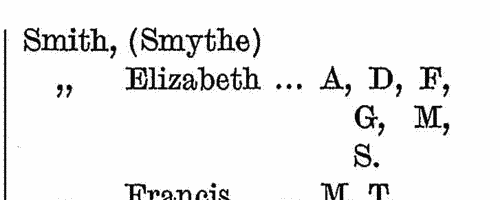
| Inhabitants of Hertfordshire
(1702-1732)
These people signed various rolls at Hertford, mainly concerning allegiance. The letters are the key to the rolls involved:
a. Oaths of allegiance, supremacy and abjuration under an Act of 1 George I: 1727 to 1732;
b. Oaths of allegiance, supremacy and abjuration under an Act of 6 Anne: 25 April 1715;
c. Oaths of allegiance, supremacy and abjuration under an Act of 6 Anne: 21 August 1714 to 21 April 1718;
d. Oath for naturalizing Foreign Protestants under Act of 7 Anne: 10 May to 15 August 1719;
e. Oath of allegiance under Act of 1 Anne: I. 13 July 1702 to 19 July 1714; II. 13 July 1702 to 19 February 1709; III. 13 July 1702 to 8 October 1708;
f. Declaration against Transubstantiation, under Act of 1 William & Mary: I. 13 July 1702 to 9 January 1710; II. 12 July 1714 to 21 April 1718; III. 25 April 1715; IV. 10 July 1727 to 17 April 1732. | Sample scan, click to enlarge
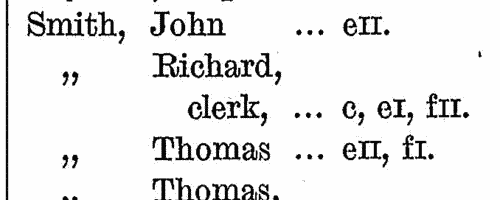
|  Masters and Apprentices
(1737) Masters and Apprentices
(1737)
Apprenticeship indentures and clerks' articles were subject to a 6d or 12d per pound stamp duty: the registers of the payments usually give the master's trade, address, and occupation, and the apprentice's father's name and address, as well as details of the date and length of the apprenticeship. 1 January to 31 December 1737 | Sample scan, click to enlarge

|  Masters and Apprentices
(1744) Masters and Apprentices
(1744)
Apprenticeship indentures and clerks' articles were subject to a 6d or 12d per pound stamp duty: the registers of the payments usually give the master's trade, address, and occupation, and the apprentice's father's name and address, as well as details of the date and length of the apprenticeship. | Sample scan, click to enlarge

| Inhabitants of London
(1805)
Holden's Triennial Directory for 1805 to 1807 includes this 'London Alphabet. Private Residences'. About 10,000 people are recorded. | Sample scan, click to enlarge
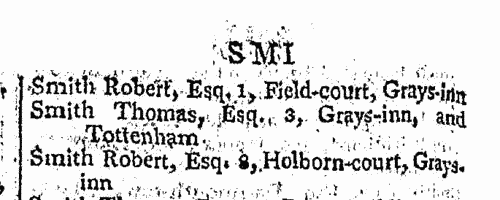
| Deaths, Marriages, News and Promotions
(1808)
Death notices and obituaries, marriage and birth notices, civil and military promotions, clerical preferments and domestic occurrences, as reported in the Gentleman's Magazine. Mostly from England and Wales, but items from Ireland, Scotland and abroad.
| Sample scan, click to enlarge

| Subscribers to the Wesleyan Methodist preachers' schools
(1814-1815)
Children of Wesleyan Methodist preachers could be educated by the church at their schools at Kingswood and Woodhouse Grove. These schools were supported by subscriptions and donations raised in local congregations throughout England and Wales, and in some years the individuals making larger donations are listed in the annual minutes, grouped together by congregation. | Sample scan, click to enlarge
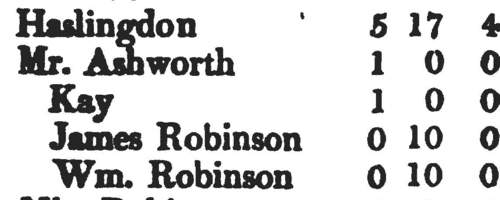
| Inhabitants of Somerset
(1830)
Pigot & Co.'s National Commercial Directory lists traders, farmers and private residents in the county. | Sample scan, click to enlarge
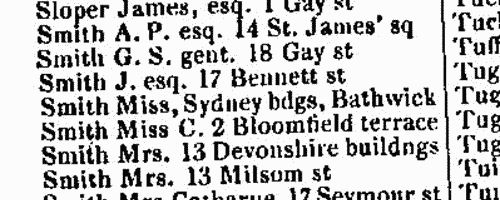
| Cambridgeshire Voters: Cambridge
(1832)
The poll on the election of three knights of the shire to serve in Parliament for the county of Cambridge, was taken at Cambridge, Royston, Newmarket, Ely, Wisbech and Whittlesea 18 and 19 December 1832. The candidates were Henry John Adeane esquire, Richard Greaves Townley esquire, Charles Philip Yorke esquire and John Walbanke Childers esquire. This poll book sets out the names of the voters in alphabetical order hundred by hundred and parish by parish. The voters' full names are stated, surname first. The right hand column records their votes. The new qualification for suffrage in the counties, after the passage of the 1832 Great Reform Bill, was the possession of a freehold estate worth 40s a year or more, a copyhold or long leasehold of £10 a year or more, or a tenancy or short leasehold of £50 a year or more.
| Sample scan, click to enlarge

| Insolvents
(1836)
Insolvency notices for England and Wales: insolvency often caused people to restart their lives elsewhere, so these are an important source for lost links | Sample scan, click to enlarge

|
Research your ancestry, family history, genealogy and one-name study by direct access to original records and archives indexed by surname.
|












